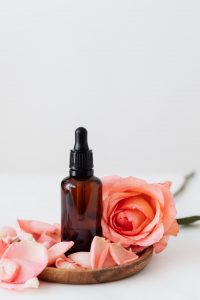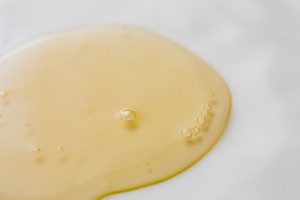Are shampoos really that toxic? How do I know if my shampoo is toxic? Should we be reading shampoo labels?
In our previous post Life is too short for toxic shampoos Part 1 we discussed five toxic ingredients commonly found in shampoos. Here in Part 2, we continue looking into toxic ingredients that turn our shampoos into products that should come with a health warning in the best of cases.
Let us begin…
– Polyethylene Glycol (PEG)
A petroleum derivative compound made of ethylene glycol, and the main ingredient in antifreeze. Widely used in cosmetics and hair care products as moisture-carrier, softener, solvent, and thickener, and in pharma as a laxative. Depending on the way in which companies manufacture PEGs, two compounds may form as by-products and be present in PEGs in measurable amounts: ethylene oxide and 1,4-dioxane.

Now not only does ethylene oxide harm the nervous system, and human development, but 1,4-dioxane has been:
- classified by U.S. Environmental Protection Agency (EPA) as “a likely human carcinogen” that ‘does not readily biodegrade in the environment”.
- In 2016 the U.S. Department of Health and Human Services National Toxicology Program (NTP) found enough reasonable evidence to declare it a human carcinogen.
- The International Agency for Research on Cancer classifies ethylene oxide as a known human carcinogen and 1,4-dioxane as a possible human carcinogen.
And while it is possible to remove 1,4-dioxane from products during manufacturing by vacuum stripping, it would be almost impossible for consumers to know whether the product they are about to pay for has been stripped or not.
But aside from ethylene oxide and 1,4-dioxane some PEG compounds themselves can cause:
- skin irritation
- are not safe to use on damaged skin
- (and due to their solubilising properties) they act as good penetration enhancers, allowing greater absorption of all those toxic ingredients. Great, right!? (not!)
– Retinyl Palmitate
Retinyl Palmitate, or palmitate, is an antioxidant and a vitamin A compound in hair, makeup, and skincare products, amongst others. It improves the appearance and feel of dry, damaged hair, giving it more body, restoring suppleness, and reducing flakiness on dry skin.
The irony is that as retinyl palmitate converts to retinol on the skin, it can cause:
- redness
- itchiness
- scaling
- peeling.

Not only that but:
- The U.S. National Toxicology Program (NTP) in a 2012 study suggested that it may speed the development of skin tumours and lesions on skin exposed to sunlight.
- The EU Scientific Committee on Consumer Safety limits its concentration on personal care products and cosmetics.
- The German Federal Institute for Risk Assessment (BfR) goes one step further by both recommending the restriction of palmitate concentrations to products for the face and hands, and warns against its addition to lip and body care products.
– Synthetic Fragrances
Synthetic fragrances or parfums are scents created in a lab usually from petroleum and natural gas byproducts. We can find them in everything from shampoo, hairspray, and deodorants to lipstick and sunscreens.
The law does not require manufacturers to disclose the individual components of a synthetic fragrance as they are considered a trade secret. That means many cosmetic and beauty care companies use fragrance as a term to hide away unsafe chemicals they would rather not list.
Again, something to note is that:

Firstly, synthetic fragrances, unlike natural fragrances, are derived from petroleum and natural gas, which are known to interfere with our natural hormone production.
And secondly, that to make a scent last longer manufacturers add fixatives like:
And we all know what good they do. Phthalates, in particular, are linked to:
- reduced sperm count and sperm quality
- altered development of genitals
- obesity
- reduced female fertility
- insulin resistance in men
Moreover, most of the thousands of chemicals in synthetic fragrances are not tested for toxicity, whether alone or together, and can trigger:
- allergies
- migraines
- skin irritation
- and can exacerbate asthma, and even contribute to its development in kids.
Fragrance is the second most common cause of allergic skin reactions in both Canada and the UK. And if you are thinking of opting for an unscented product, think again! Many unscented products contain masking agents or chemicals that cover the smell of other chemicals. So the way forward is synthetic fragrance-free all the way.
– Synthetic Colours
Synthetic colours are additives used to add colour or dye to products. They are found in everything from shampoo to lip balms, moisturisers, detergents, toothpaste, vitamins, candy, crisps… the list is almost endless.

Depending on the colour it can take up to 50 chemicals to create a single dye. And that is 50 chemicals too many when we take into account that they are made from: coal, tar, petroleum, or heavy metals such as arsenic, cadmium, chromium, or lead. Especially when synthetic colours made from coal tar are:
- a known carcinogen,
- can trigger allergies
- linked to: ADHD, skin irritation, sensitivity, breakouts, and blocked pores.
Synthetic colours make shampoos more beautiful and appealing, fragrances more enticing. But just like formaldehyde, or PEG, they also come with a long list of health warnings.
To answer the question at the beginning of this post:
- Yes, far too many shampoos are that toxic.
- They hide their toxicity behind umbrella terms such as fragrance and synthetic colours.
- They also hide them in plane view such as SLS, SLES, DEA, TEA, MEA, PEG, Parabens, Formaldehyde, Retinyl Palmitate, and Dimethicone.
- Reading labels, as boring and unappealing as that may be, has to be the new normal. That is if we really want to know whether what we are buying is toxic or not. At least until more companies like us decide to make toxic shampoo along with toxic beauty care products a thing of the past.
We believe all beauty care products should be natural, and that means leaving the toxic out and bringing nature in. For your peace of mind. Pure and simple.
Fancy reading some more?
– Drugs.com
https://www.drugs.com/mtm/polyethylene-glycol-3350.html
– European Union
– EU Scientific Committee on Consumer Safety (SCCS)
– EWG
Not So Sexy: The Health Risks of Secret Chemicals in Fragrance
– The German Federal Institute for Risk Assessment (BfR)
Vitamin A: Intake via cosmetic products should be restricted
– Green Facts
– ScienceDirect
https://www.sciencedirect.com/topics/chemical-engineering/polyethylene-glycols
– The US National Institute of Environmental Health Science (NIH)
https://seek.niehs.nih.gov/texis/search/?pr=internet-all&query=Phthalates&search_button=submit

